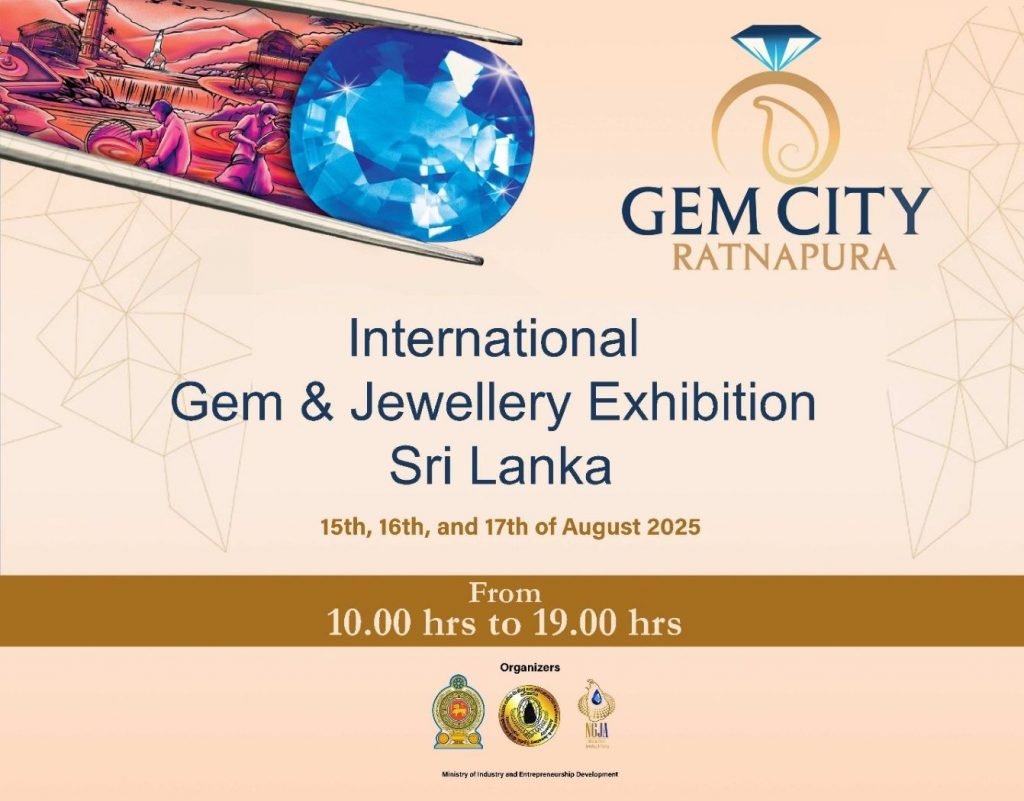Gemstone Mining Industry
A tropical island in the Indian Ocean, smaller than Scotland or Tasmania and half the size of the State of New York, Sri Lanka nonetheless possesses infinite variety, rich scenic beauty, unusual water, mineral, and biotic resources, and an ancient cultural heritage.
Sri Lanka’s location, astride the sea routes between the East and the West, exposed it to wide cultural and political influence throughout its history. The island was well known to travelers of many nationalities from ancient times and its reputation for precious stones, spices, elephants and scenic beauty is documented in the tales of Greeks, Romans, Arabs and Chinese.
Gemstone mining as a traditional industry in Sri Lanka runs way back to the era of ancient kings. The traditional, environment friendly and ethical mining methods practiced under the regulatory supervision of the National Gem and Jewellery Authority (NGJA) have set many benchmarks in the international Gemstone Mining Arena. Furthermore, traditional mining methods perfected over centuries have indeed been the primary reason for the minimum incidents of mining accidents recorded in Sri Lanka.
The most commonly used Gemstone mining method in Sri Lanka is Pit-Head Mining and Tunneling. Surface Placer Mining and River Bed Dredging are the other methods used widely.
The NGJA in it’s vision to uplift and improve the quality of life and living standards of the Gemstone Mining Community has effectively introduced a series of industry favorable rules and regulations. Mechanisms such as life insurance policies, accidental and disability compensations including mortality and educational scholarships for children have been introduced as mandatory employment per-requisites governing the Mining Industry.
Gemstone Mining Areas
Sri Lanka has been known for over 2,500 years for gemstones unique in quality and variety, and today they are the country’s most renowned and important mineral resource. Gemstone deposits lie within a geologically narrow zone. Recent geological surveys suggest that the potential for gemstones is about 50 percent higher than hitherto expected and many new gem fields have been located in the central highlands and southwestern geological formations. Gem minerals are obtained from eluvial, alluvial and residual formations.
The best known and most prolific gem producing area in the Island is the Ratnapura district of the Sabaragamuwa province, the most extensively gemmed areas being the neighborhood of Eheliyagoda, Kuruwita, Ratnapura, Pelmadulla, Balangoda, Kalawana and Rakwana. The Sabaragamuwa catchment drained by the Kalu ganga, the major river in the area, has an area of approximately 4 500 square kilometers. It is also of interest that this region is an area of heavy rainfall, and is subject to serious flooding during the wet seasons. Smaller extensions of the Sabaragamuwa gem fields are found in the Western and Southern provinces.
All these areas are the traditional gem areas where gem mining has been going on for centuries. But mining activity in the past three decades or so in the upper reaches of the Menik ganga in the neighborhood of Buttala and Okkampitiya in the Uva province, and still more recently in the Elahera area in the Matale district of the Central Province, indicate that the gem bearing areas are not confined to the south-west sector of the Island . Further prospecting operations in these new regions are likely to, reveal gem bearing gravels though they are unlikely to be as extensive or as prolific as the Sabaragamuwa gravels. Other locations which have produced some stones in the past are the Nuwara Eliya basin, the Horton Plains, Maskeliya and the Kandy district. With the exception of moonstones, which are obtained from partly altered pegmatites, near Ambalangoda, all other gem material is obtained from alluvial deposits of rivers and streams, or in abandoned channels, draining regions containing gem bearing crystalline rocks.
Gem mining and sensitive areas
Gem mining in Sri Lanka has been widespread in many areas of the country. Some of these gem mines are located in environmentally sensitive areas. Mining in this type of areas can be created critical environmental and morphological problems. Therefore mining consultancy on that type of cases is essential. NGJA provides the consultancy services given by Mining Engineers, Geologists and Environmental Officers.
Environmental Impact Assessments
Different kind of environmental impact assessments also carried out by NGJA for their mining sites. Initial environmental examination reports are produced for almost all the mining sites which are conducted by NGJA to obtain environmental clearances. Other than that EIA reports are submitted to obtain environmental clearance for mining projects conducted in environmental sensitive areas.
Environmental friendly gem mining
The miners always educate to treat effluent water from the gravel washing machine and re-use after treat them to remove silt and mud by using number of sedimentation tanks and silt traps. The technique of circulation of effluent water through series of sedimentation ponds also minimizes water pollution by silt and mud was introduced. Existing pits after extract the gem gravel can be used easily as sedimentation ponds which will refill the pits automatically.
Rehabilitation programmes
The miners also informed to initiate an effective rehabilitation programme with commencing of the project, and continuing it day to day. Excavated over burden has to be stored separately. These are also included in to license conditions of the mining license.

